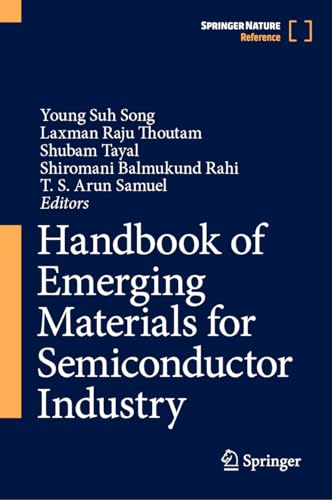What are the key emerging materials and technologies discussed in the Handbook of Emerging Materials for Semiconductor Industry, and how do they contribute to the advancement of semiconductor applications?
The Handbook of Emerging Materials for Semiconductor Industry discusses a variety of key materials and technologies. Notable among these are nanomaterials like graphene and carbon nanotubes, which offer exceptional electrical, thermal, and mechanical properties. The book also covers high-k materials, which are used in gate stacks to reduce leakage current in transistors.
Advanced fabrication techniques such as thin film deposition, ion implantation, and 3D stacking are highlighted, enabling the creation of more complex and efficient semiconductor devices. Additionally, the integration of new materials in circuit design, like metal nanowires and conductive polymers, is discussed, aiming to enhance device performance and endurance.
These materials and technologies contribute to the advancement of semiconductor applications by enabling higher performance, lower power consumption, and increased density. They also facilitate the development of new applications, such as flexible electronics, energy storage devices, and advanced sensors, driving innovation in the semiconductor industry.

Shiromani Balmukund Rahi, Young Suh Song, Laxman Raju Thoutam, T. S. Arun Samuel, Shubam Tayal
The book is suggested to engineers and scientists across the world working on various new and novel materials for reliable semiconductor device applications. The book is expected to serve as a reference guide for young scientists and engineers in the field of material science and electronic engineers to acquire latest state-of-art experimental and computational tools to encourage their research activities.
Since the scope of the book is generic, the book can be referred by all the students of science and engineering students to create a common awareness about the latest material systems and state-of-art characterization tools that have been broadly utilized to study the physical and chemical properties of different material systems.
It introduces the readers to a wide variety of new emerging materials systems including their synthesis, fabrication, measurement, reliability test, modelling and simulations with in-depth analysis of selective applications.
This book contains the state-of-art research updates in the various fields of semiconductor, artificial intelligence (AI), bio-sensor, biotechnology, with respect to reliable material research. Therefore, various students who are eager to get a job in semiconductor/AI/Autonomous car/biotechnology are strongly recommended to read this book and learn about related state-of-art knowledge.